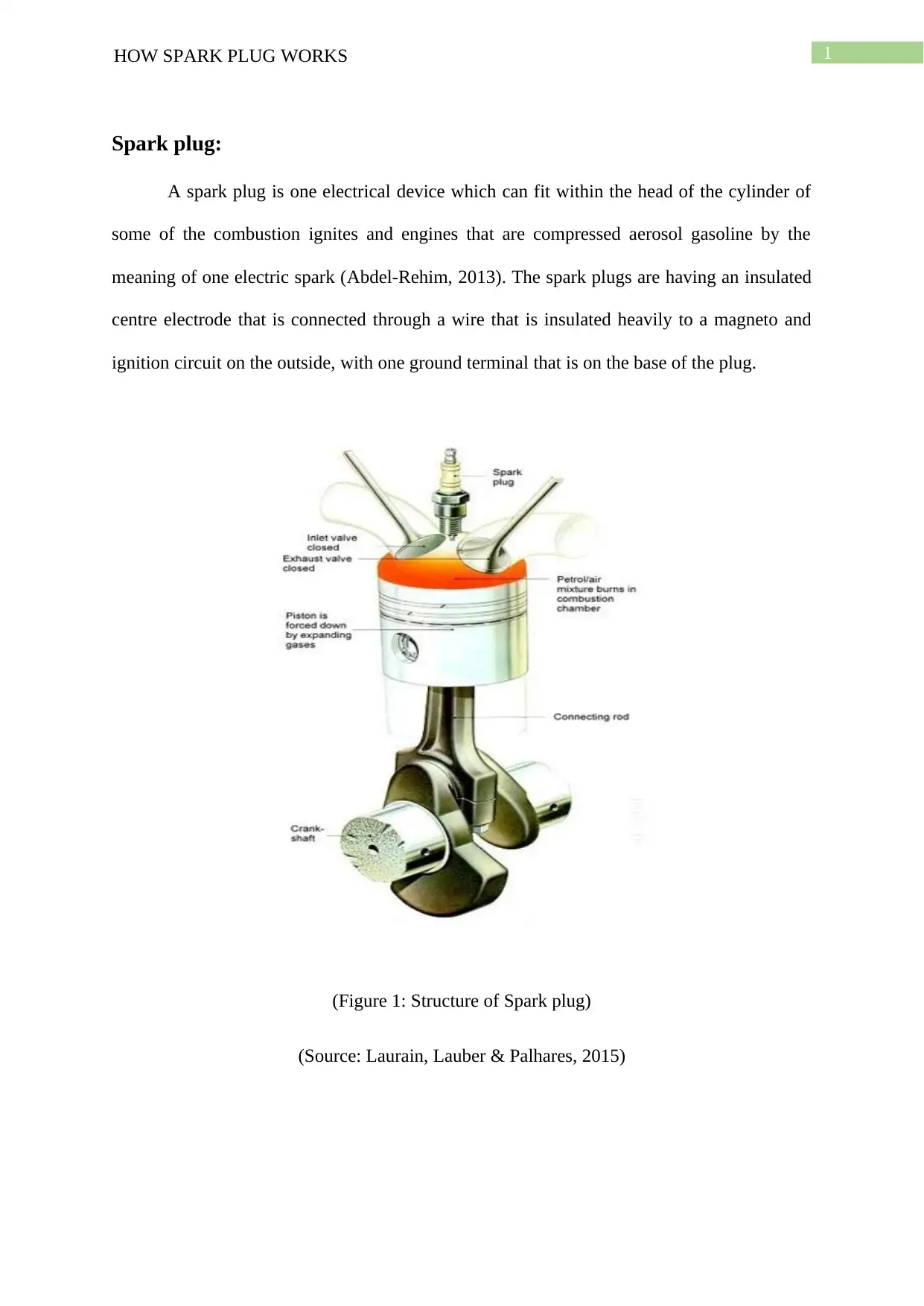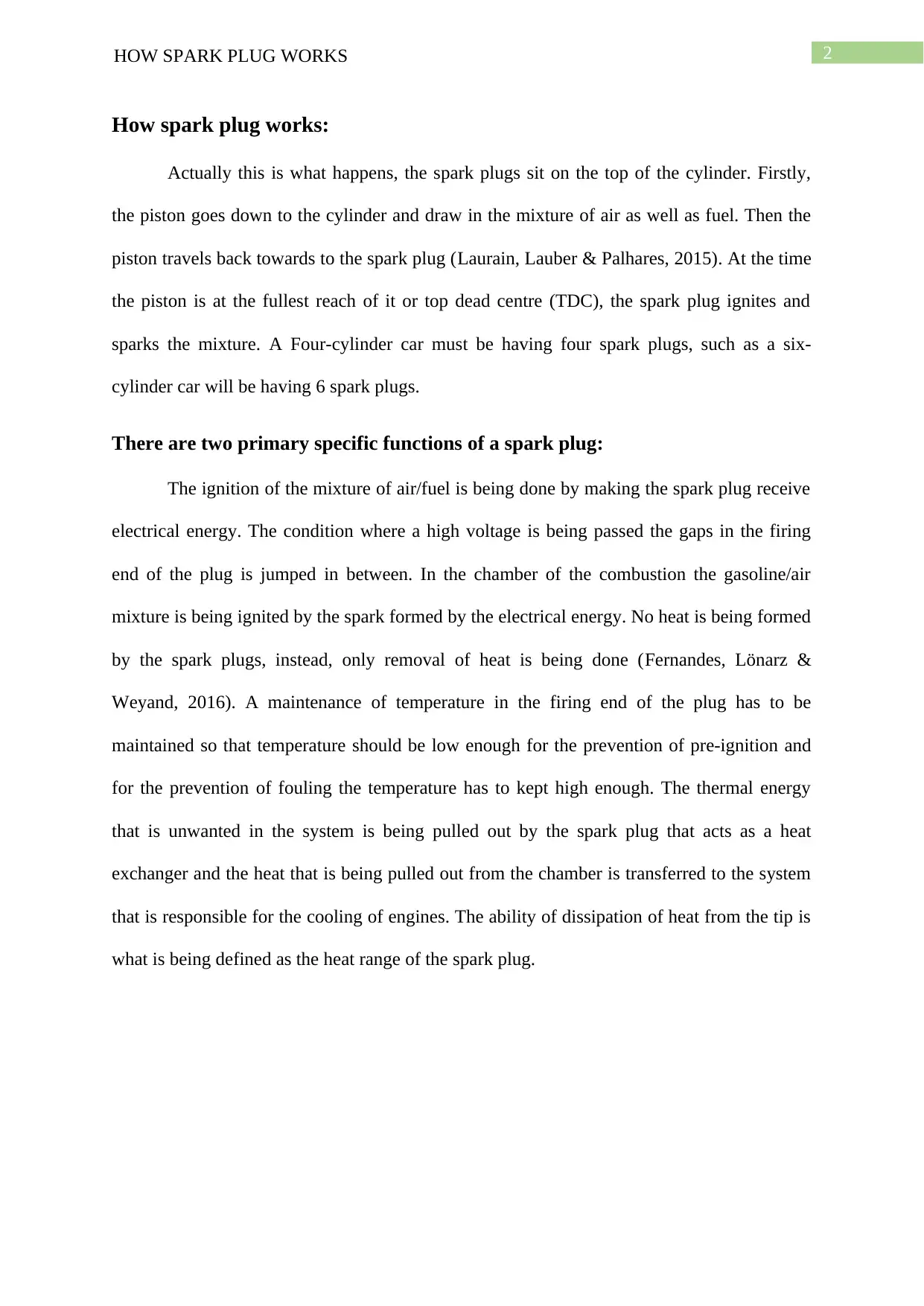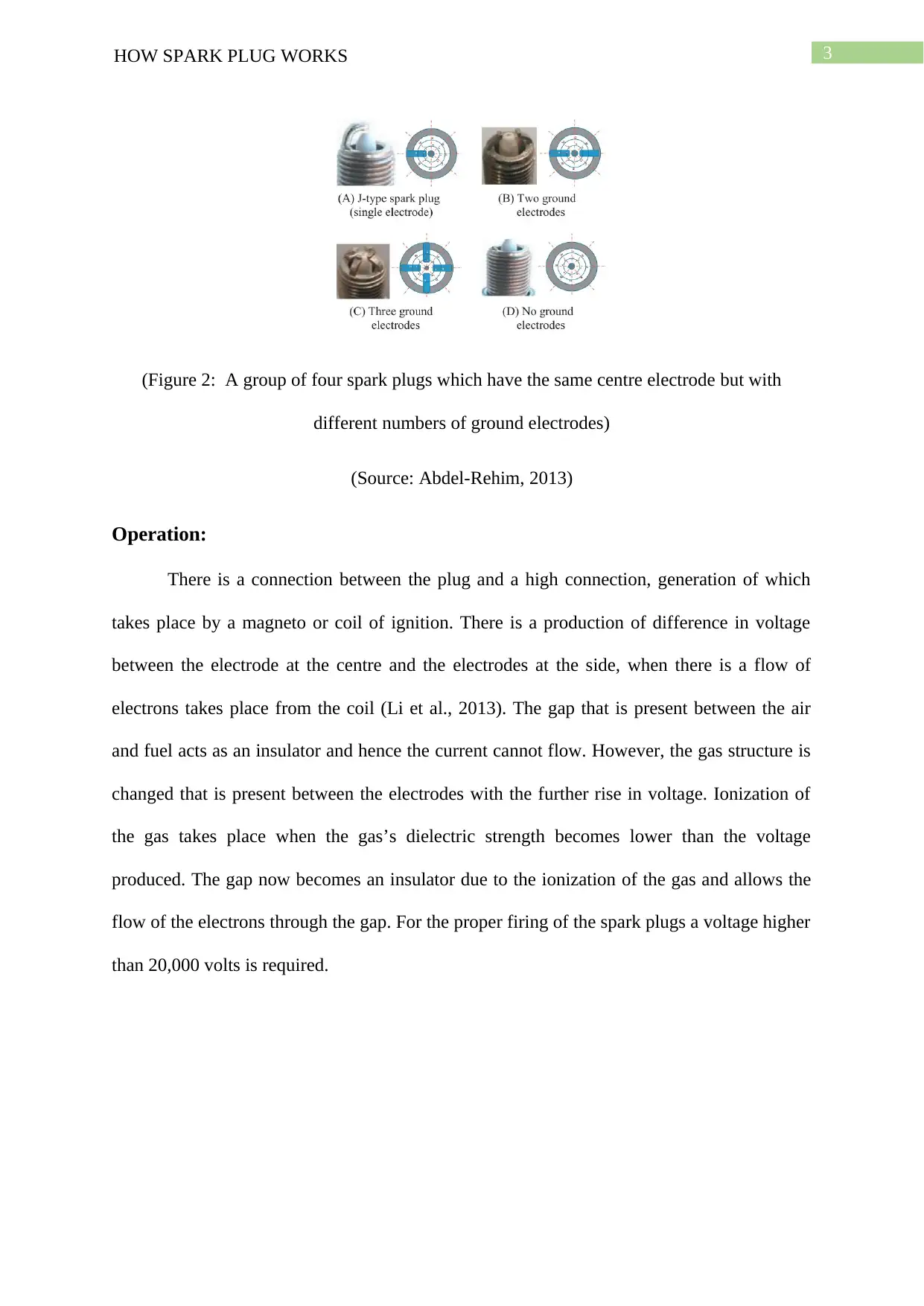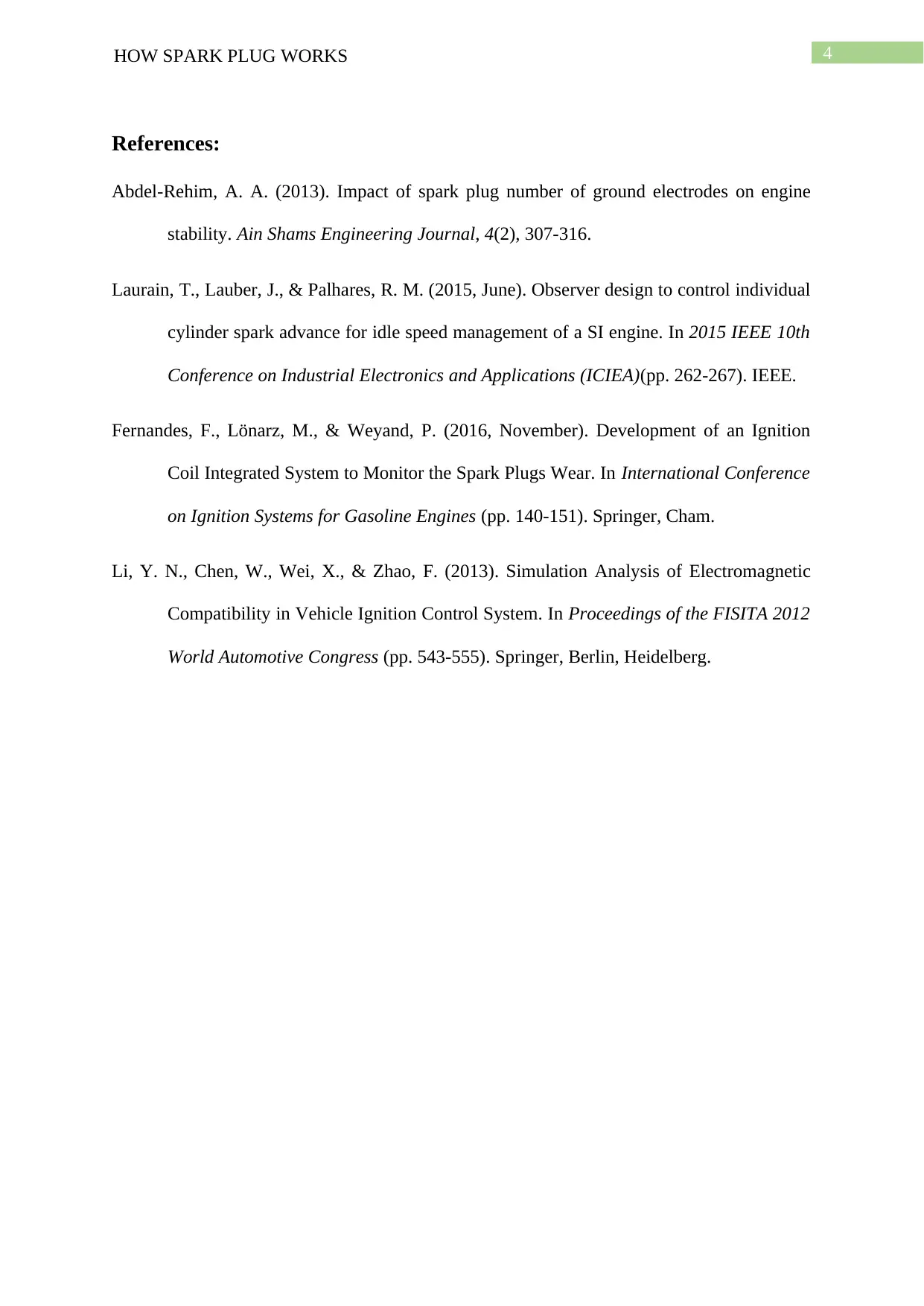University Report: Detailed Explanation of Spark Plug Functionality
VerifiedAdded on 2023/01/12
|5
|866
|35
Report
AI Summary
This report provides a technical description of a spark plug, explaining its function in an internal combustion engine. It details the spark plug's components, including the insulated center electrode, ground terminal, and their role in igniting the air/fuel mixture within the engine cylinder. The report explains the process of how the spark plug receives electrical energy, generates a spark, and ignites the fuel. It further describes the operation, including the connection to the ignition coil, the voltage generation, and the ionization of the gas to allow current flow, highlighting the need for high voltage (over 20,000 volts) for proper firing. The report references several sources to support its explanation and includes figures to illustrate the structure and function of the spark plug.
1 out of 5






![[object Object]](/_next/static/media/star-bottom.7253800d.svg)